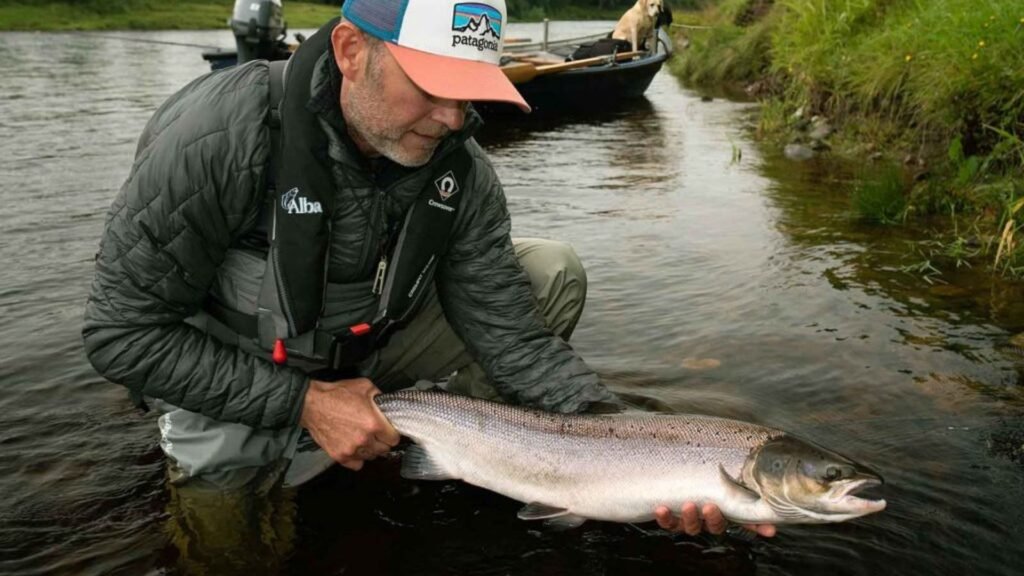Catching Atlantic salmon with a fly can be a thrilling and rewarding experience for anglers. These magnificent fish are known for their powerful runs and acrobatic leaps, making them a highly sought-after prize. However, successfully catching Atlantic salmon requires a combination of skill, knowledge, and patience. Whether you’re a beginner or an experienced fly fisher, understanding the best techniques and strategies can greatly improve your chances of landing one of these incredible fish. Here are some of the best tips to help you succeed in your salmon fishing adventures:

Best Tips for Catching Atlantic Salmon with a Fly
1. Choose the Right Fly
Selecting the right fly is crucial. Atlantic salmon flies come in various patterns, sizes, and colors. Popular choices include:
- Hairwing Flies: These are versatile and can be used in different water conditions.
- Shrimp Flies: Imitate the natural prey of salmon.
- Spey Flies: Effective in deeper and faster waters.
2. Understand the Salmon’s Behavior
Knowing the habits and behavior of Atlantic salmon can significantly increase your chances of success. Key points to consider include:
- Migratory Patterns: Atlantic salmon migrate upstream to spawn. Fishing near river mouths and upstream pools can be highly productive.
- Feeding Habits: While they don’t feed during migration, they may strike out of aggression or curiosity.
3. Use the Right Gear
Having the appropriate gear can make a big difference. Essential equipment includes:
- Fly Rod: A 9-10 foot, 7-9 weight rod is ideal for salmon fishing.
- Fly Reel: Should have a good drag system to handle strong, fast runs.
- Fly Line: Use a weight-forward floating line for general fishing, but have sinking tips or lines for deeper waters.
4. Perfect Your Casting Technique
Efficient casting is essential for presenting your fly effectively. Practice different techniques like:
- Spey Casting: Useful in wide rivers with limited backcasting space.
- Overhead Casting: Effective for long-distance casting in open areas.
5. Read the Water
Understanding how to read the water can help you locate salmon. Look for:
- Riffles and Runs: Salmon often rest in these areas.
- Deep Pools: Provide shelter and are good spots to target.
6. Use Proper Presentation
Presenting your fly naturally and enticingly is key. Tips for effective presentation include:
- Swinging the Fly: Let the current carry your fly across the water, mimicking natural movement.
- Stripping the Fly: Retrieve the fly in short, quick strips to provoke a strike.
7. Be Patient and Persistent
Atlantic salmon fishing requires patience and persistence. Conditions can change, so be prepared to adapt your tactics. Keep these in mind:
- Time of Day: Early morning and late evening are often the best times.
- Weather Conditions: Cloudy days and light rain can improve chances as salmon feel more secure.
8. Respect the Environment
Practice sustainable fishing to protect the salmon population and their habitats:
- Catch and Release: Handle fish gently and release them promptly.
- Follow Regulations: Adhere to local fishing laws and guidelines.
9. Learn from Others
Connecting with experienced anglers can provide valuable insights. Consider joining fishing clubs, attending workshops, and participating in online forums to exchange tips and experiences.
Conclusion
In conclusion, catching Atlantic salmon with a fly is a rewarding challenge. By choosing the right fly, understanding salmon behavior, using appropriate gear, perfecting your casting technique, reading the water, presenting your fly effectively, being patient, respecting the environment, and learning from others, you can increase your chances of success. Happy fishing!




